Carménère wine, once thought to be a forgotten varietal, has experienced a renaissance in recent years, with wine aficionados and casual drinkers alike discovering their affection for this unique and flavorful grape. Originating in the Bordeaux region of France, Carménère was nearly eradicated due to the phylloxera epidemic in the 19th century. Luckily, the grape made an extraordinary comeback in Chile, where the Carménère vines had been imported prior to the crisis in Europe.
Revival of Carménère Wine
It wasn’t until the mid-1990s when Carménère was recognized as a distinct grape variety in Chile. Prior to this discovery, it had mistakenly been labeled as a Merlot grape due to their similar appearances. This serendipitous revelation has allowed Chile to claim Carménère as its signature grape, quickly gaining international acclaim for producing full-bodied wines with exceptional flavor profiles. Featuring notes of red fruits, spices, and hints of chocolate, the wines crafted from Carménère grapes complement a wide array of cuisines and have captured the palates of wine enthusiasts worldwide.

As the popularity of Carménère wines continues to grow, so does the interest in learning more about the grape’s history, cultivation, and characteristics. The Carménère story is one of resilience and reinvention, as this unique grape finds its rightful place in the world of wine, thanks in part to the dedication and passion of Chilean winemakers preserving its legacy.
Carménère: History and Origin
Carménère is a red wine grape variety originally from the Bordeaux region of France. As one of the six classic Bordeaux grape varieties, it was widely grown in France, alongside Cabernet Sauvignon, Merlot, Cabernet Franc, Malbec, and Petit Verdot. However, the phylloxera infestation in the mid-19th century led to a sharp decline of Carménère in its homeland.
Roots in the Bordeaux Region
In the 1860s, the phylloxera plague devastated Bordeaux vineyards, forcing vintners to replant their vineyards with phylloxera-resistant rootstock. During this period, Carménère’s characteristics often led to it being confused with other grape varieties, such as Cabernet Franc and Merlot. As a result, it became less popular in France and eventually nearly disappeared from Bordeaux altogether.

However, in the mid-1990s, DNA analysis revealed that Carménère had been thriving in Chile under the mistaken belief that it was Merlot. Chilean winegrowers had been importing vines from Bordeaux and unknowingly continued to cultivate Carménère long after it had virtually vanished from its native region. With this discovery, Carménère gained renewed interest, and Chile became the leading producer of this unique grape variety.
Modern Carménère
Today, Carménère is primarily grown in Chile’s Maipo Province, where it has adapted well to South America’s warmer climate. It also plays a prominent role in the blends of the Pessac-Léognan and Médoc regions of Bordeaux, albeit in smaller quantities. In addition to Chile and France, Carménère has been planted in Italy and China, where it continues to grow in popularity for its distinctive flavors and rich history.

Carménère was once known as Grande Vidure, as well as Vidure in Bordeaux. This versatile grape variety is prized for its fruitful flavors of red and dark fruit, with hints of spice and earthiness. Its unique taste has earned Carménère the title of Chile’s flagship grape, as it is now widely associated with the country’s image on the global wine stage.
Carménère Grape Characteristics
Carménère grapes are a distinctive variety known for their deep red color and unique herbaceous flavor profile. Originally from the Bordeaux region of France, they have found a new home in Chile, where they have become the country’s signature grape.
Growing Conditions
The Carménère grape is a slow ripening grape that requires a long growing season to reach full maturity. This makes it well suited to the warm, dry climate of Chile’s vineyards. However, because of its long ripening period, the grape can sometimes be susceptible to a condition called coulure, which results in the grape not developing properly.
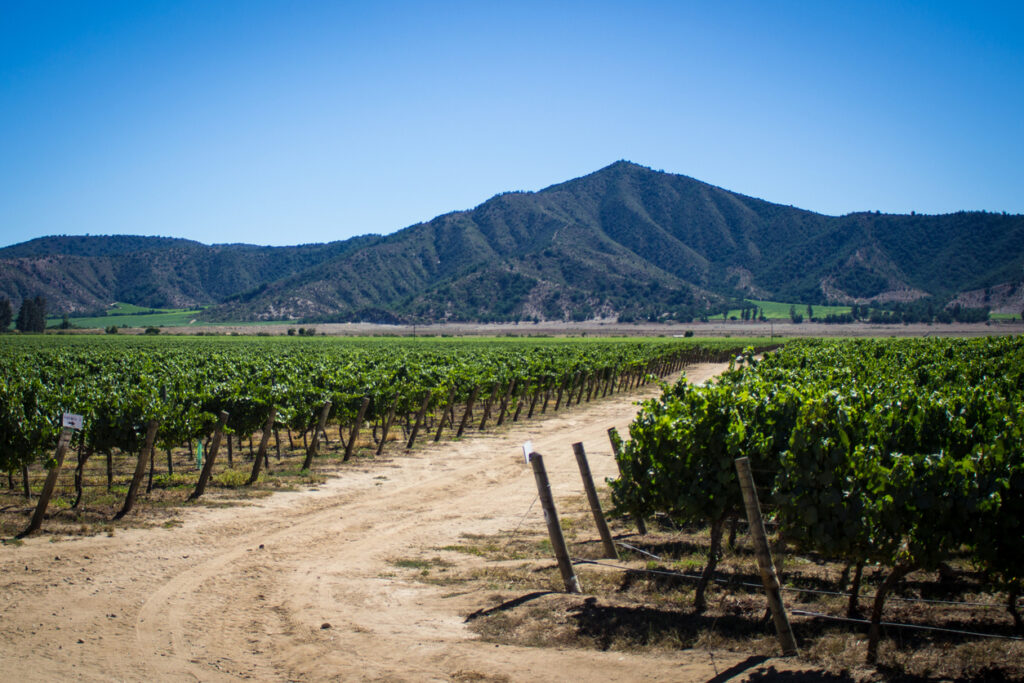
Flavor Profile of Carménère Wine
One of the main attributes of this grape variety is its rich and varied flavor profile. Carménère grapes exhibit flavors such as cherry, raspberry, and black plum, with noticeable herbaceous notes, often described as reminiscent of bell pepper or green peppercorn. The acidity of the wine made from these grapes is typically moderate, which helps to balance the fruity and herbaceous characteristics.
Carménère grapes are often compared to Cabernet Sauvignon, as they share some similarities in taste and appearance. However, Carménère wines usually have a lower tannin content and softer mouthfeel, as well as a distinctive spice and earthiness.
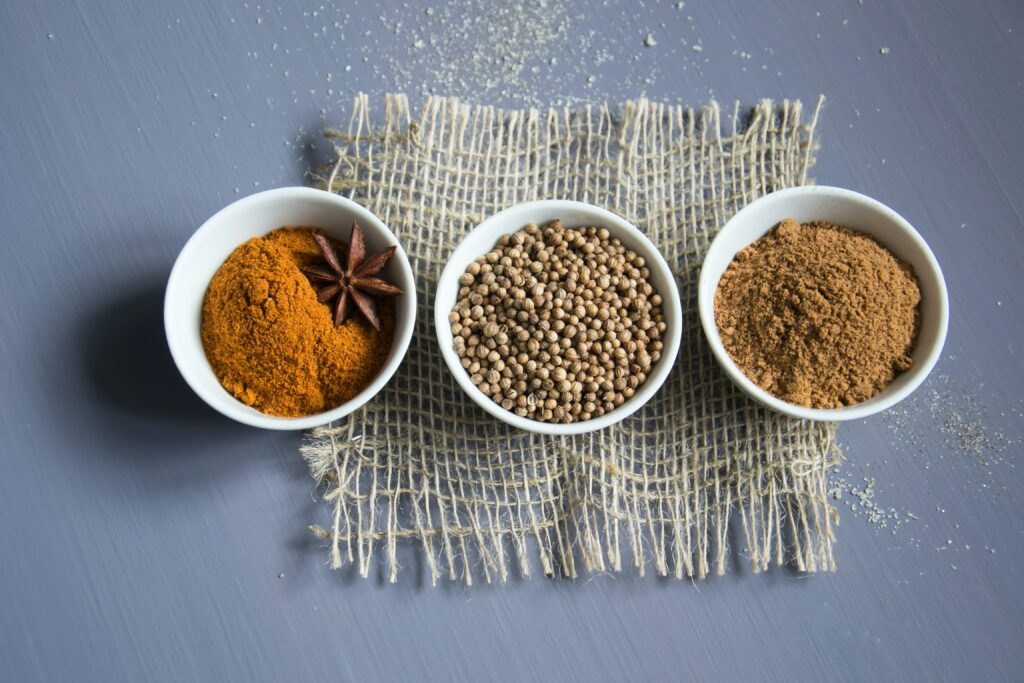
In general, Carménère grapes thrive in well-drained soils and prefer moderate sunlight. The Graves region in Bordeaux was once a prominent producer of this grape variety, but due to difficulties with ripening and susceptibility to disease, Carménère plantings decreased over time.
Since its rediscovery in Chile in the 1990s, Carménère has gained global attention and appreciation for its unique flavors and characteristics. Wine enthusiasts around the world now recognize the potential of this grape variety and its ability to produce complex and distinctive wines.
Regions for Carménère Wine
Chilean Regions
Carménère wine, originally from France, has found its perfect home in Chile’s diverse terroirs. The Central Valley of Chile has become the epicenter of Carménère grape cultivation, with several prominent sub-regions producing high-quality wines.
Colchagua Valley is a key area in the development of Carménère, as it benefits from a Mediterranean climate and diverse soil types. The hillsides of Apalta are particularly well-suited for this grape, resulting in wines with a distinct minerality and bold flavors.
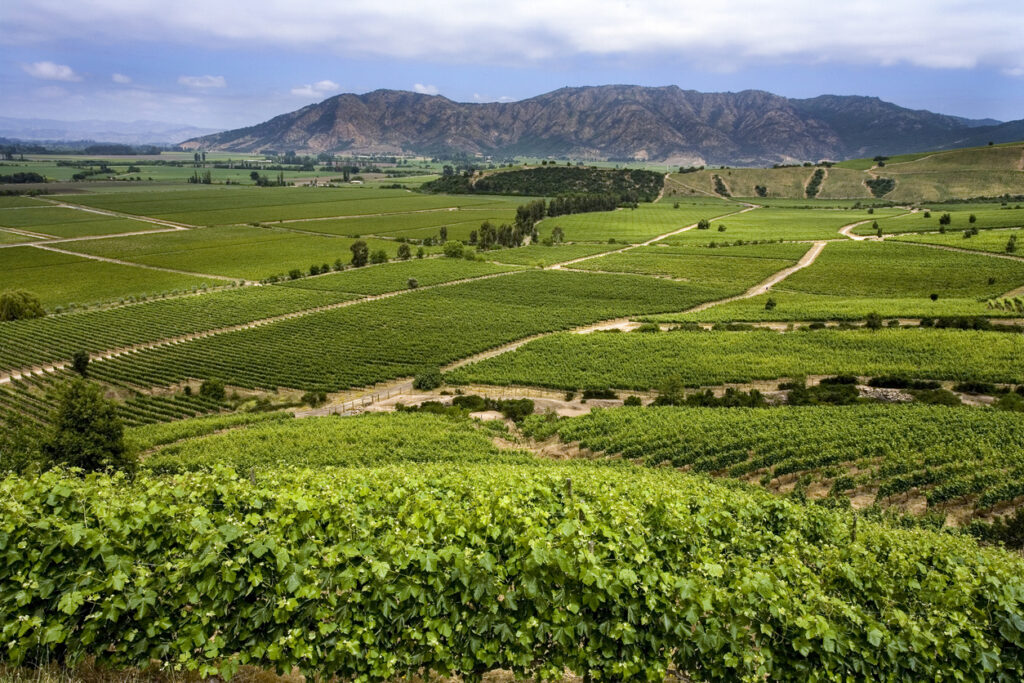
Rapel Valley, encompassing both Cachapoal Valley and Colchagua, is another significant region for Carménère production. Notable areas within Rapel Valley include Peumo, where the warm climate and clay soils contribute to elegant and rounded wines with notes of hibiscus and rose petal.
Non-Chilean Regions
Although Chile is the dominant player in Carménère wine, other regions have started to embrace this unique grape variety, experimenting with blends and single varietals.
Argentina
Carménère shares some characteristics with Malbec, another Bordeaux variety. Argentine winemakers often blend Carménère with Cabernet Franc or Syrah, achieving complex flavors and evoking a sense of petrichor.

North America
California and Washington are two US states that have added Carménère to their varietal portfolio. In the Walla Walla region of Washington, Carménère wines showcase bold fruit flavors with a distinct earthy minerality.
Spain
The Iberian Peninsula has also shown interest in Carménère, with winemakers in both Spain and Portugal exploring its potential. Here, winemakers often blend Carménère with native grape varieties such as Sangiovese, resulting in unique and expressive wines.
The diverse terroirs and climates of these regions contribute to the various expressions of Carménère wine, satisfying a range of palates and wine preferences worldwide.
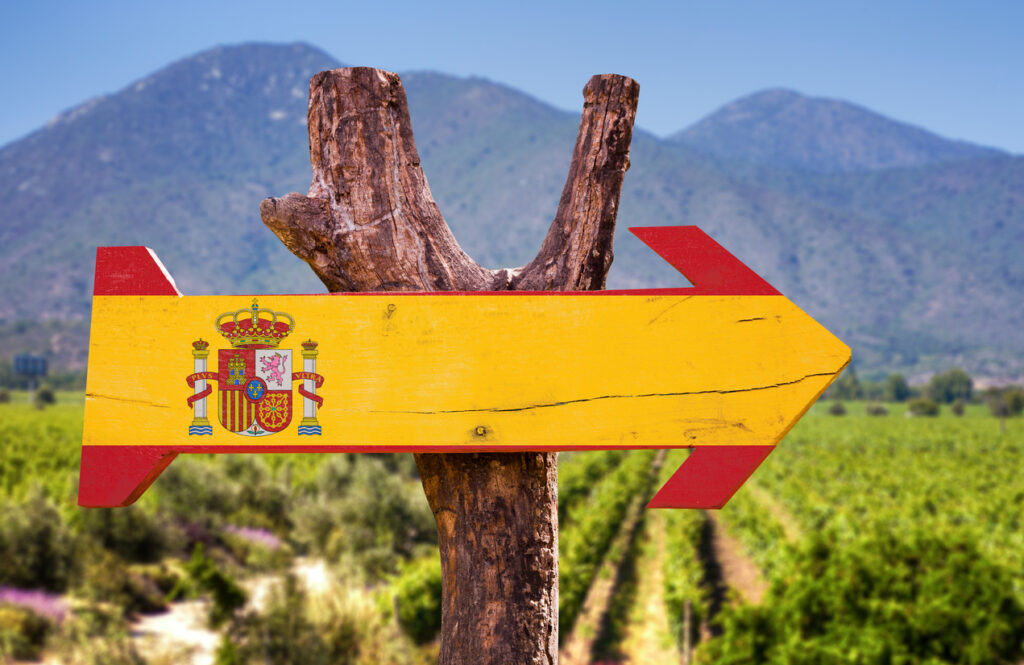
Carménère Wine Flavor Profile
Carménère wine is a uniquely flavored red wine originating from the Bordeaux region of France. This medium-bodied wine has established a strong identity among wine enthusiasts due to its distinctive taste profile.
The primary flavors of Carménère wine include raspberry, green peppercorn, and cocoa powder, which contribute to its complex and interesting palate. These flavors are further enhanced by subtle notes of mint, oak, dark chocolate, tobacco, and leather. Thanks to its origins in Chile, Carménère has also developed a unique earthy quality, reminiscent of petrichor.

As a red wine, Carménère possesses a moderate level of tannins, giving it a supple and smooth texture on the palate. In terms of structure, its tannin content is well-balanced by a reasonably high alcohol by volume (ABV), which typically ranges between 13.5% and 14.5%.
The presence of pyrazines is another defining characteristic of Carménère wine. These naturally occurring compounds contribute to the wine’s distinct green peppercorn and bell pepper flavors. Like other red wines aged in oak barrels, Carménère can also develop subtle hints of vanilla and spice, adding yet another layer of complexity to its flavor profile.
In conclusion, Carménère wine offers a rich and intricate array of flavors that sets it apart from other red wines. Its medium-bodied nature, balanced tannins, and diverse taste profile make it a versatile and beloved choice for wine lovers around the world.
Carménère Wine Production
Carménère wine production has a rich history. It stems from its origins as a blending grape commonly found alongside Cabernet Sauvignon and Merlot. The deep red grape variety is known for its herbaceous profile. It is predominantly grown in Chile and small regions of France.

Carménère was once classified as a major grape variety in Bordeaux, used for blending with Cabernet Sauvignon and Merlot. However, after the phylloxera epidemic in Europe during the 19th century, the grape’s cultivation significantly decreased. It wasn’t until the 1990s when ampelographer Jean-Michel Boursiquot uncovered that what was believed to be Merlot grown in Chile was, in fact, Carménère.
The Department of Agriculture has played a vital role in developing methods for identifying and cultivating Carménère grapes. They have supported research that led to determining optimal climates and necessary techniques for healthy grapevines. Consequently, Chile has become the world’s leading producer of Carménère wine, with over 90% of the global production coming from this region.
Growing Conditions for Carménère Grapes
When it comes to Carménère wine production, specific factors contribute to the development of its unique flavor profile and aroma. Soil composition, viticultural practices, and harvesting decisions all play a crucial role in the final product. Vintners often utilize sandy or well-drained clay soils with good water retention. – This allows vines to establish deep roots and develop robust grape crops. The climate should be warm and dry with ample sun exposure, enabling the grapes to reach medium to full maturity.
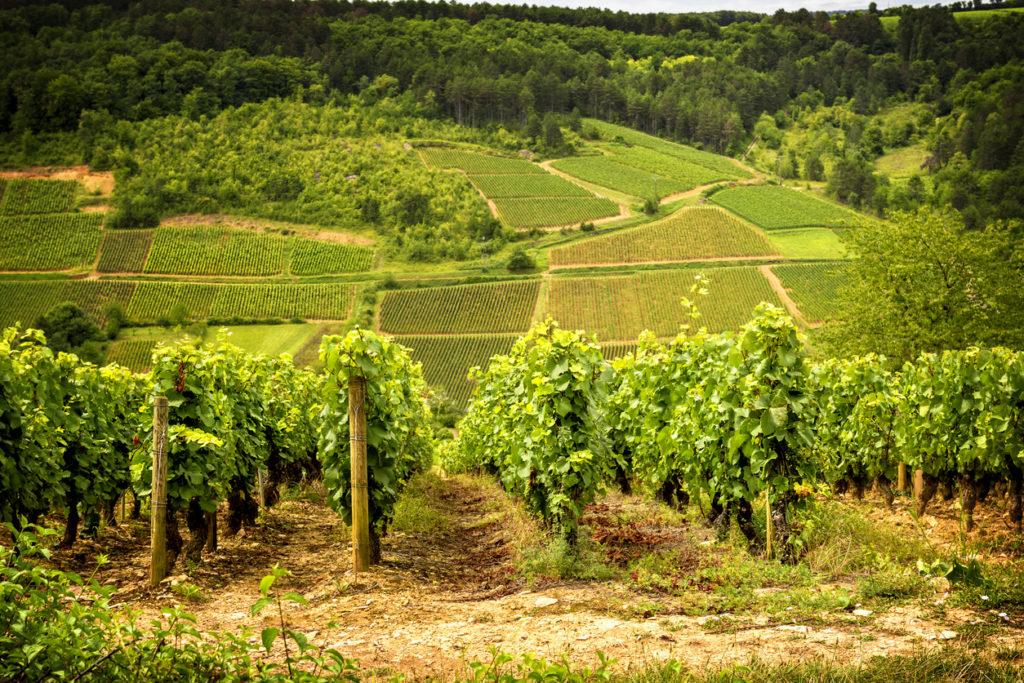
Carménère grapes can be quite delicate during the winemaking process. Winemakers must carefully manage tannin extraction. They need to avoid excessive green or vegetal flavors reminiscent of kale, which may result from underripe grapes. A watchful eye must also be kept on the alcohol content, as high levels can overpower the wine’s delicate flavors.
Blending with Carménère Wines
Winemakers have the creative freedom to blend Carménère with other grape varieties. You can find blends with Cabernet Sauvignon and Merlot, to produce complex, yet well-balanced wines. The resulting blend highlights Carménère’s fruity, spicy characteristics while adding depth and structure from its counterparts. With its continued rise in popularity, Carménère wine proudly stands as an exceptional choice for wine enthusiasts globally.

Carménère Wine Food Pairings
Carménère wine, known for its earthy notes and versatile flavors, pairs exceptionally well with various types of food. In this section, we will explore some delectable food pairings to enhance your dining experience with this unique wine.
Meat
Lamb is a fantastic choice to pair with Carménère wine, especially when grilled. The wine’s fruity and spicy notes complement the rich flavors of the lamb, creating a harmonious blend of tastes.
Turkey is another excellent option to serve with Carménère wine. The earthy notes in the wine add depth to the lean, mild flavor of the turkey. They provide a satisfying meal experience. For an added touch, include a paprika-based rub for the turkey to echo the wine’s spice characteristics.

When it comes to poultry, duck is also a well-suited match for Carménère wine. A raspberry sauce served alongside the duck can help bridge the fruity notes in the wine. It creates a delightful balance on the palate.
South American cuisine is an outstanding partner for Carménère wine, given its origins in Chile. Dishes such as lechon asado (roast pork) and anything served with chimichurri sauce will enhance the wine’s flavors. This creates a scrumptious and authentic food pairing.
Soups and Stews
Carménère wine pairs wonderfully with hearty stews and soups, such as pinto bean chile or white bean and kale soup. The robust flavors of these dishes meld seamlessly with the wine, allowing both the food and the wine to shine.
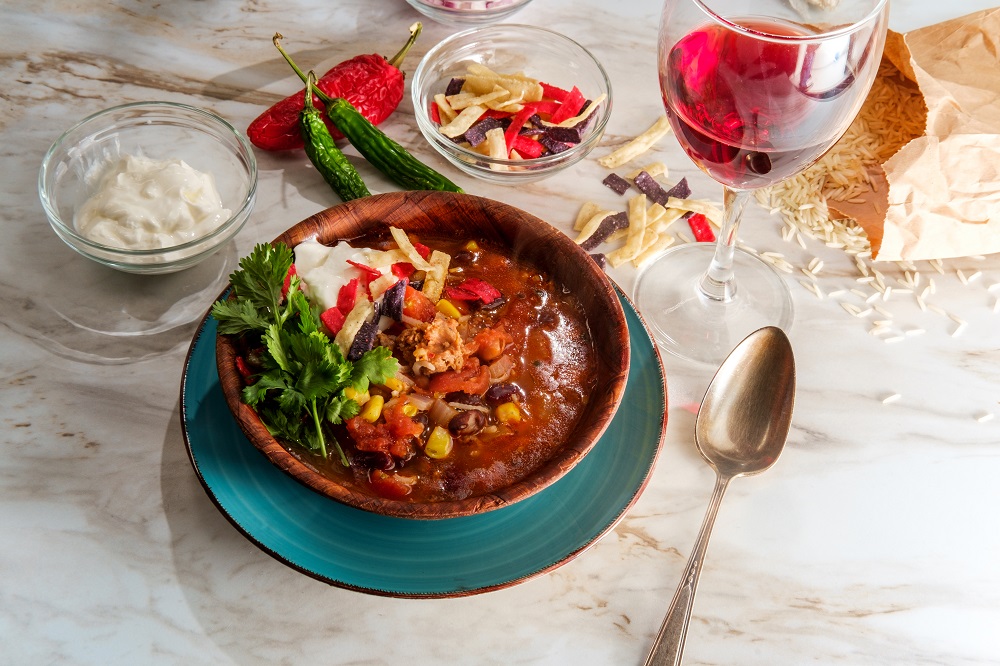
In conclusion, Carménère wine is a versatile choice for food pairings. Particularly when it comes to grilled meats, earthy stews, and dishes with South American flair. The combination of the wine’s fruity, earthy, and spicy characteristics make it a favorite for food lovers who appreciate a dynamic dining experience.
Carménère Wine Serving Suggestions
Carménère wine, originating from the Bordeaux region of France, is now predominantly produced in Chile. This deep red wine with flavors of ripe berries, spices, and sometimes eucalyptus makes an excellent addition to various meals. Here are some serving suggestions to enhance your Carménère wine experience.
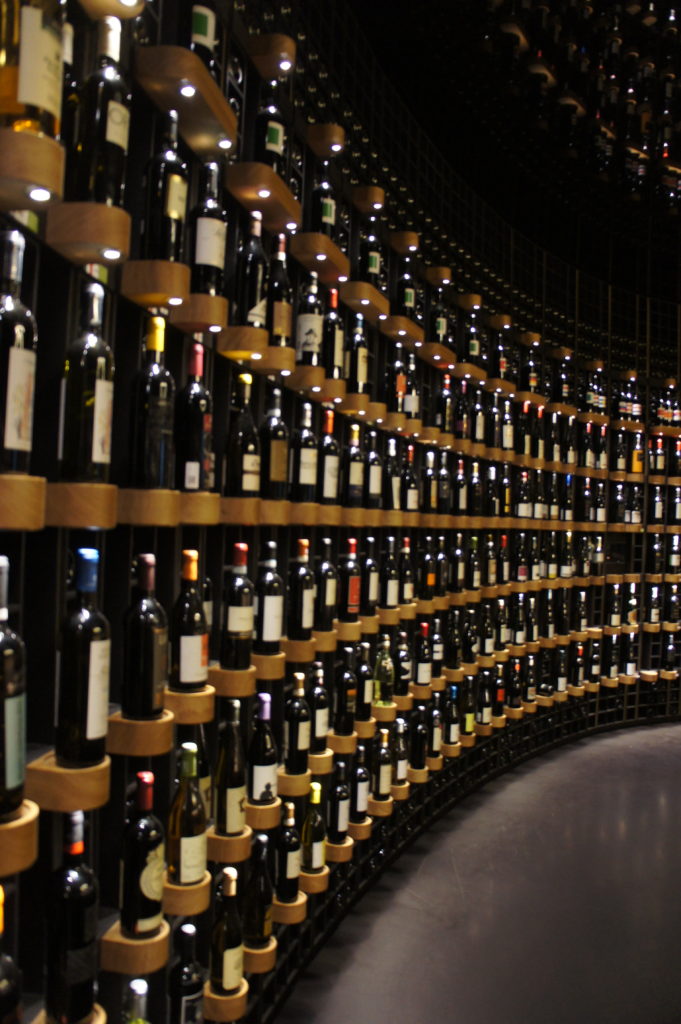
Carménère wine pairs well with a variety of dishes, especially those with bold flavors. Some delectable options include roasted or grilled meat dishes such as beef, lamb, and pork. Its deep flavors and medium tannin levels complement the richness of the meat, creating a beautiful harmony on the palate. Additionally, dishes featuring eucalyptus can provide an intriguing contrast to the wine’s fruity notes.
Vegetarian dishes also make for an excellent pairing with Carménère. It goes well with options such as vegetable stews, roasted vegetables, and dishes containing mushrooms or eggplants. The earthy undertones of the wine connect wonderfully with the vegetable-based dishes, adding depth to the overall experience.
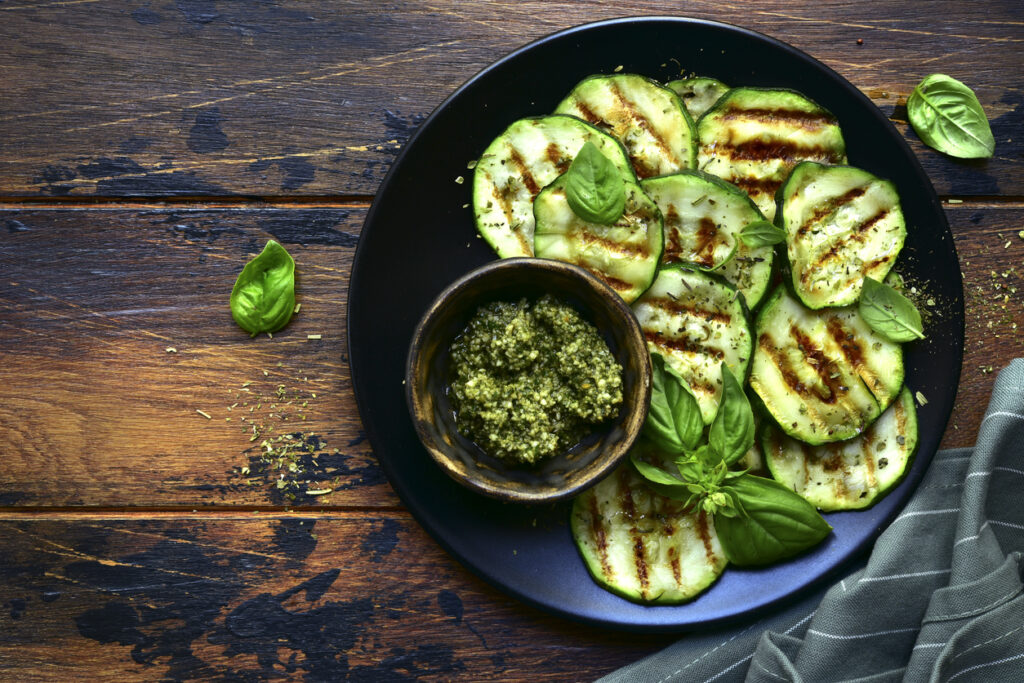
When serving Carménère, it is recommended to open the bottle and allow it to breathe for approximately 30 minutes before pouring. This helps the wine to open up and reveal its full range of flavors. Serving the wine at a temperature of around 60-65°F (16-18°C) will ensure it is at its best.
In terms of glassware, choosing a large, wide bowl-shaped wine glass will enable the wine’s aroma to develop more fully. Swirling the wine gently in the glass can also help release additional flavors and scents.
To summarize, Carménère wine is a versatile and bold choice that can pair well with a range of dishes. They can vary from rich meats to flavorful vegetarian options. Serving it at the appropriate temperature, in the right glassware, and giving it time to breathe will ensure an enjoyable and memorable wine experience.

